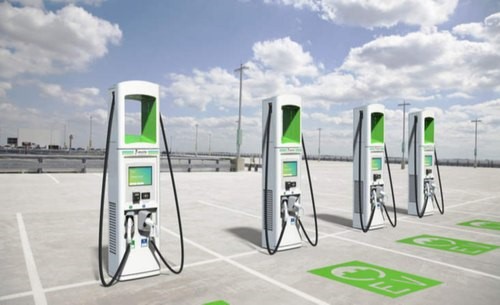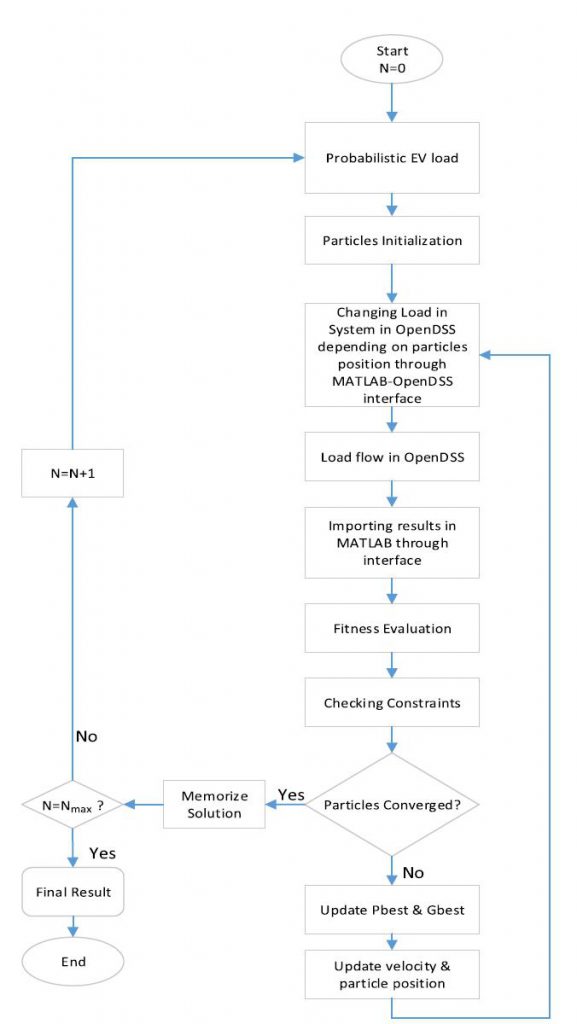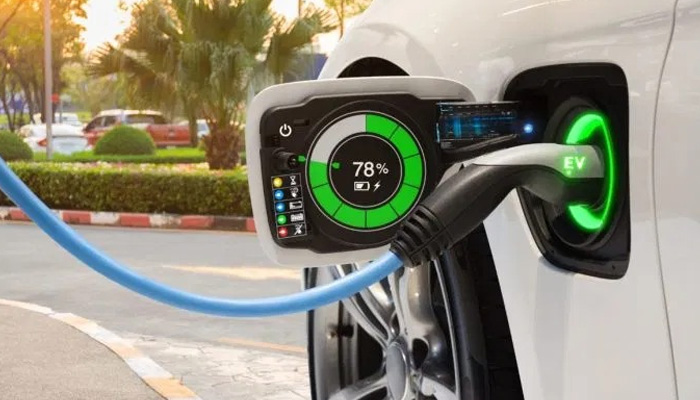Electric vehicles (EVs) are at the core of clean transportation envisaged for a sustainable future. As more people switch to electric vehicles in the developed world, publicly available electric vehicle charging points have become a common sight in the city centers, as seen in Figure 1. Electrification of the transportation sector can play a vital role in reshaping smart cities. With an increasing number of EVs on the road, deployment of well-planned and efficient charging infrastructure is highly desirable. Supported by their smart grid infrastructures and robust planning mechanisms, the developed countries can readily spur the adoption of electric vehicles.

However, developing countries face a completely different scenario while promoting electric vehicles. In Pakistan, the government has introduced a new policy for growth of EVs, but it lacks any requirements to explore EV hosting capacity of our legacy distribution grids and subsequent mandatory planning by distribution companies for optimal placement of EV charging stations. Note that installation of super-fast EV chargers at every possible site is not techno-economically justified because their high-power consumption may cause violation of critical system parameters. Therefore, grid managers of university campuses, residential estates and commercial areas must determine optimal combination of super-fast, fast, and regular EV chargers to achieve an overall reliable and least cost operation. This aspect has opened new avenues for researchers across the globe to develop frameworks for optimal placement of EVs charging stations in active distribution networks.
A research team at NUST US Pakistan Center for Advanced Studies in Energy (USPCAS-E), led by Dr Kashif Imran, and in collaboration with researchers at Arizona State University (ASU), Clemson University and Austrian Institute of Technology, has explored optimal placement of electric vehicle charging stations in the active distribution network of NUST. The research team conducted an on-campus survey of vehicle owners to model their uncertain behavior with stochastic EV load estimation. Moreover, it was identified that optimized combination of three types of EV chargers for efficiently managing the EV load, while incorporating effects of photovoltaic (PV) generation, requires minimizing installation cost, losses, and distribution transformer loading. Consequently, the team faced a constrained nonlinear stochastic optimization problem of practical nature.
Based on the above analysis, particle swarm optimization (PSO) was deployed in MATLAB to solve the constrained nonlinear stochastic problem, while OpenDSS was employed to simulate the distribution grid model, as depicted in Figure 2. The simulation framework was validated on the real distribution system illustrated in Figure 3, existing parking slots, and traveling patterns of vehicles entering and leaving the campus of the National University of Sciences and Technology (NUST) Pakistan.

Results published in [1] shows that an optimized combination of chargers placed at judicious locations can greatly reduce cost from $3.55 million to $1.99 million, daily losses from 787kWh to 286kWh and distribution transformer congestion from 58% to 22% when compared to scenario of optimized placement of super-fast chargers for 20% penetration level in commercial feeders. In residential feeder, these statistics are improved from $2.52 to $0.81 million, from 2167kWh to 398kWh and from 106% to 14%, respectively. It is also realized that the integration of PV improves voltage profile and reduces the negative impact of EV load. Our optimization model can work for commercial areas such as offices, university campuses, and industries as well as residential colonies. Our research offers a comprehensive framework that enables grid managers of university campuses, residential estates, and commercial areas to optimally set up electric vehicle charging points without jeopardizing reliable and least-cost operation of the grid.
Acknowledgement:
The authors would like to acknowledge guidance and research support provided by Atif Naveed Khan, USPCAS-E, NUST, Islamabad, Pakistan, and Reetam Sen Biswas and Pooja Gupta, Electrical, Electronics, and Computer Department, Arizona State University (ASU), USA.
References:
[1] Muhammad Zulqarnain Zeb, Kashif Imran, Abraiz Khattak, Abdul Kashif Janjua, Anamitra Pal, Muhammad Nadeem, Jiangfeng Zhang, Sohail Khan, “Optimal Placement of Electric Vehicle Charging Stations in the Active Distribution Network,” IEEE Access, Vol 8, 2020. https://doi.org/10.1109/ACCESS.2020.2984127
The author is an Associate Professor and Head of the Department of Electrical Power Engineering at US Pakistan Center for Advanced Studies in Energy (USPCAS-E), National University of Sciences and Technology (NUST) and can be reached at [email protected] or [email protected]





